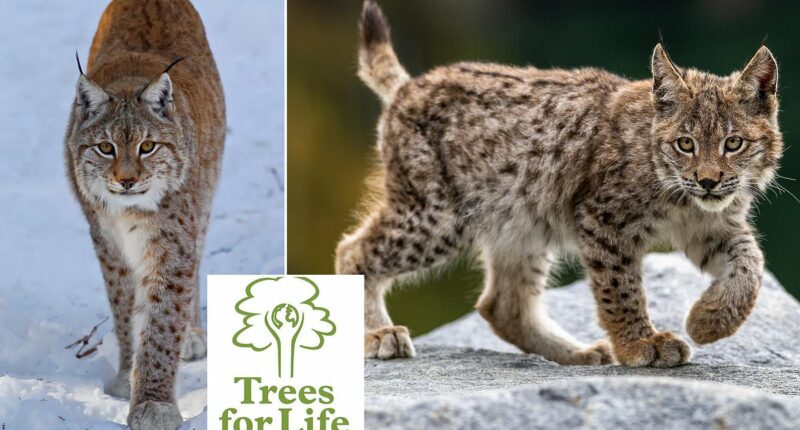Share this @internewscast.com
Once a familiar presence across Britain, the Eurasian lynx last roamed the Scottish landscape more than a thousand years ago.
These majestic cats were eradicated from Scotland approximately 1,300 years ago, primarily due to hunting pressures and the loss of their natural habitat.
Now, a group of three conservation charities is eager to reintroduce these elusive felines to the Highland wilderness. To spearhead this effort, they are in search of lynx engagement officers to evaluate the feasibility of such a reintroduction.
Two new positions are currently being advertised under the “Lynx to Scotland” initiative, which aims to assess the potential for these animals to once again thrive in the Highlands.
Ranked as Europe’s third-largest predator, following the brown bear and wolf, the reintroduction of the lynx remains a contentious topic. Detractors express concerns about potential livestock losses and safety risks to humans.
Nonetheless, advocates for rewilding argue that top predators like the lynx play a crucial role in maintaining the equilibrium of natural ecosystems.
The Lynx to Scotland scheme, which also involves Scotland: The Big Picture, Trees for Life and Vincent Wildlife Trust, is assessing if a population of the cats could be supported in Scotland.
The new engagement officers, earning close to £26,000 a year, are expected to represent the project at meeting and ‘engage in conversations’ with communities, landowners and rural groups most like impacted about their concerns.

Eurasian lynx were driven to extinction in Scotland around 1,300 years ago

Rewilding organisations say that apex predators are key to keeping ecosystems in balance
Successful candidates will have a comprehensive understanding of Scotland’s ecological and cultural landscape – and the often-heated debate surrounding species reintroductions.
Lisa Chilton, CEO of Scotland: The Big Picture, said: ‘We are part of the Lynx to Scotland partnership, which is working to return the Eurasian lynx to the Scottish Highlands through a carefully managed reintroduction process.
‘Returning lynx would help restore biodiversity and improve the health of our ecosystems. It would also benefit the rural economy and restore a sense of wildness to Scotland.
‘Studies show there is enough habitat and prey for them to thrive again in Scotland, and the latest polls show strong public backing for their return, with 61 per cent in favour and only 13 per cent opposed.
‘Our partnership is committed to consulting those who could be impacted by a reintroduction.
‘During 2024, we completed the National Lynx Discussion, which brought together a wide range of stakeholder groups including farmer and landowner organisations, gamekeepers, foresters, tourism operators and conservationists.
‘This process resulted in an agreement from all participants to continue exploring the possibility of reintroducing lynx.

The lynx to Scotland engagement officer will have a comprehensive understanding of Scotland’s ecological and cultural landscape
‘Further discussions next year will give people the chance to learn more, share their views and knowledge, and help shape how challenges and opportunities are managed.
‘The engagement officer roles advertised last week will be critical in supporting this important process.’
Earlier this year, four lynx were illegally released in the Cairngorms National Park.
The cats were rescued in freezing overnight temperatures by experts from the Royal Zoological Society of Scotland in January.
One of the abandoned juveniles died but three have settled in at the Highland Wildlife Park, a few miles from where they were found.
The unplanned release of the animals was condemned by welfare groups and prompted a police investigation with no arrests so far.
















